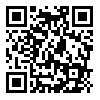Volume 6, Issue 1 (Fall 2019)
IJRN 2019, 6(1): 50-59 |
Back to browse issues page
Download citation:
BibTeX | RIS | EndNote | Medlars | ProCite | Reference Manager | RefWorks
Send citation to:



BibTeX | RIS | EndNote | Medlars | ProCite | Reference Manager | RefWorks
Send citation to:
shojaei Z, Golparvar M, Aghaei A, Bordbar M R. Comparing the Effectiveness of Group Story Therapy and the Art-Play Therapy on Anxiety and Depression in Children with Cancer: Based on the Framework, Principles and Rules of Cognitive-Behavioral Approach. IJRN 2019; 6 (1) :50-59
URL: http://ijrn.ir/article-1-438-en.html
URL: http://ijrn.ir/article-1-438-en.html
Islamic Azad University, Isfahan (Khorasgan) Branch
Abstract: (9876 Views)
Introduction: Anxiety and depression are among the variables that children with cancer need psychological treatment for them. The aim of this study was to determine the comparing the effectiveness of group story therapy and the art-play therapy on anxiety and depression in children with cancer based on the framework, principles and rules of cognitive-behavioral approach.
Methods: The research method was semi-experimental, and research design was three groups with three stages (pre-test, post-test and follow up design). In order to carry out the research, from 8-12 years old children with cancer in Amir Hospital, in Shiraz city in the Summer of 2018, 36 children were purposefully selected and randomly assigned to three groups (two experimental and one control group, each group was 12 children). Children Anxiety Scale (SCAS- Spence, 1998) and Children Depression Scale (CDS- Tisher & Lang, 1978) was used to measure the dependent variable in the pretest, post-test and follow up. The group of cognitive-behavioral story therapy and cognitive-behavioral art-play therapy received 12 sessions of treatment. The data were analyzed with the use of repeated measures analysis of variance.
Results: The results showed that there is a significant difference between cognitive-behavioral story therapy and cognitive-behavioral art-play therapy and with control group in anxiety (F=29.98, P<0.001) and depression (F=28.62, P<0.001). Also, cognitive-behavioral art-play therapy had stronger effects than cognitive-behavioral story therapy in reducing anxiety and depression (P<0.001).
Conclusions: Based on the results of this study, it can be said that cognitive-behavioral story therapy and cognitive-behavioral art-play therapy can be used as a treatment to reduce the anxiety and depression of children with cancer in educational and therapeutic settings.
Methods: The research method was semi-experimental, and research design was three groups with three stages (pre-test, post-test and follow up design). In order to carry out the research, from 8-12 years old children with cancer in Amir Hospital, in Shiraz city in the Summer of 2018, 36 children were purposefully selected and randomly assigned to three groups (two experimental and one control group, each group was 12 children). Children Anxiety Scale (SCAS- Spence, 1998) and Children Depression Scale (CDS- Tisher & Lang, 1978) was used to measure the dependent variable in the pretest, post-test and follow up. The group of cognitive-behavioral story therapy and cognitive-behavioral art-play therapy received 12 sessions of treatment. The data were analyzed with the use of repeated measures analysis of variance.
Results: The results showed that there is a significant difference between cognitive-behavioral story therapy and cognitive-behavioral art-play therapy and with control group in anxiety (F=29.98, P<0.001) and depression (F=28.62, P<0.001). Also, cognitive-behavioral art-play therapy had stronger effects than cognitive-behavioral story therapy in reducing anxiety and depression (P<0.001).
Conclusions: Based on the results of this study, it can be said that cognitive-behavioral story therapy and cognitive-behavioral art-play therapy can be used as a treatment to reduce the anxiety and depression of children with cancer in educational and therapeutic settings.
Type of Study: Applicable |
Received: 2018/12/14 | Accepted: 2019/03/7 | Published: 2019/09/28
Received: 2018/12/14 | Accepted: 2019/03/7 | Published: 2019/09/28
Send email to the article author
| Rights and permissions | |
 |
This work is licensed under a Creative Commons Attribution-NonCommercial 4.0 International License. |




